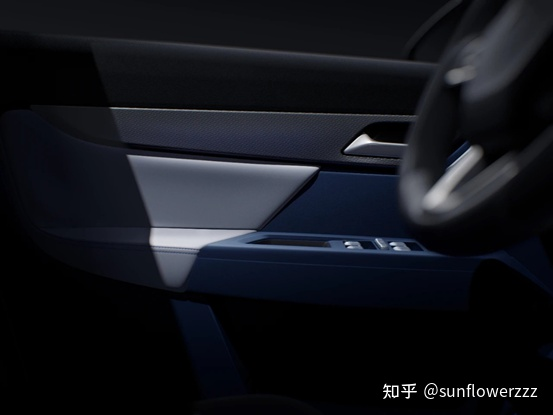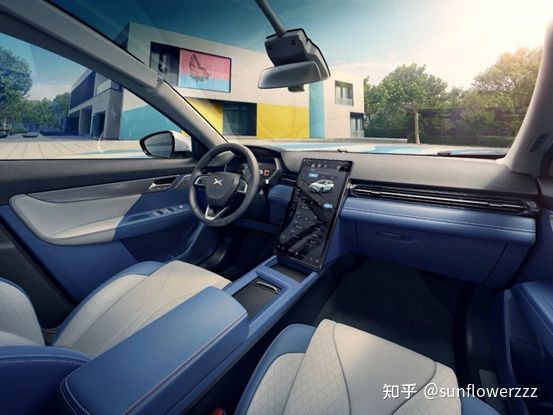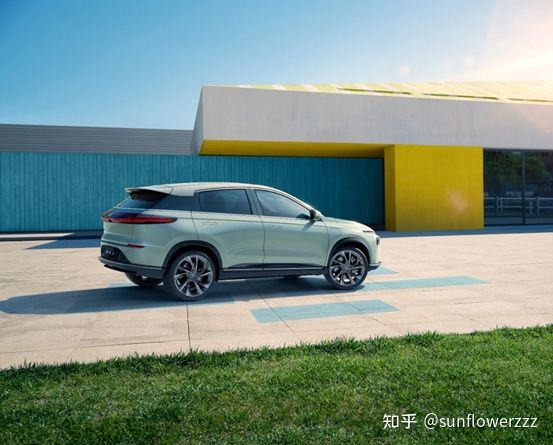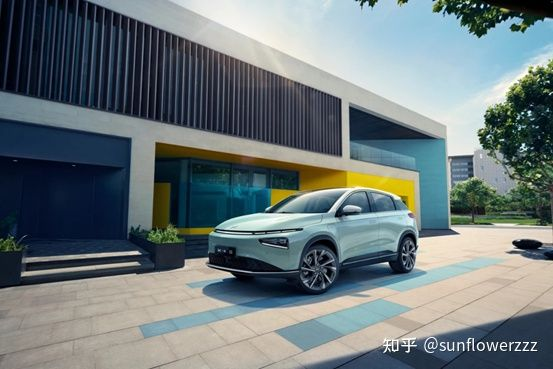An English Markdown text translated from the Chinese text below
From the disclosed information, it seems that the changes in G3i compared to G3 are a regular mid-term modification that is consistent with traditional automobile industry cognition. Being a new force in the industry, XPeng Motors has not completely relied on OTA software experience updates and abandoned the hardware experience and perception improvement of automobile products in their life cycle.
P7, which has become a calling card for XPeng Motors in the past year, has stunned audiences with its XPILOT 3.0 intelligent driving experience. It has made people almost forget what XPeng Motors looked like before the light sword front face appeared.
In fact, the early versions of G3, which were named after internet products, such as BETA version, 1.0 version, etc., had almost evolved every time they appeared. The final appearance of G3 was designed by XPeng Motors after numerous revisions. In my personal opinion, the design of G3 mass production is indeed the most aesthetically pleasing among XPeng Motors before P7 appeared.
XPeng Motors’ current familial appearance for exterior design was shaped on P7, which has a more mature product strategy. P7, with both intelligent driving and cockpit facilities, together with several other leading new car manufacturing companies, defined the appearance that automotive products should have in the new era. After incorporating P7’s design language, G3i is indeed what G3 should have been initially. The front end speech of G3i is closer to the already delivered P7 for almost a year instead of the newly released P5, which is somewhat confusing. However, the final effect is very coherent, so there is no need to go into the reasons for this.
Along with the iconic light sword style headlights on the front face of P7, another iconic design of P7 comes along- the intelligent light language, which gives G3i the ability to express themselves outwardly.
Appearance changes and new paint colors
Apart from other changes in appearance, there are new green, blue, and red paint colors, especially the eye-catching green color seen in the debut official images. However, as of the time of writing this answer draft, XPeng has not yet given these new colors a catchy name and story. The texture of the colors looks quite similar to the glaze colors of the Song Dynasty official kiln, overflowing with green and emerald hues. In contrast to other new car brands that often use names related to the North and South poles or the atmosphere, or those that are close to the annual new colors of super luxury brands, for a smart product that emphasizes a better understanding of the Chinese market, it would be a good choice for XPeng to use inspiration from traditional Chinese colors.

In addition, there are changes in the interior and exterior, such as hidden door handles and blue and white color collision design in the interior. Both are design elements that new forces in the industry have used in recent years to enhance the perceived quality. Readers may be familiar with the blue and white double color interior used by some new car brands. Here are two examples: Lynk&Co ZERO Concept car and the mass-produced version of Dongfeng’s Voyah Free.

Improvement in appearance for G3i
With its good appearance as a foundation, G3i should further strengthen the competition in the entry-level price segment for XPeng, which has been silently guarding under the halo of P7 in the past few years. According to insurance data, since the delivery of P7 in the second half of 2020, G3 still accounts for about 40% of XPeng’s overall sales volume. The arrival of G3i should contribute to the overall increase in XPeng’s delivery volume.
Of course, the comprehensive improvement in appearance, design, and perception is just the beginning for XPeng. For G3i, intelligent improvement is even more important.
The biggest change in intelligent improvement for G3i is the new cockpit solution based on the 820A chip, which allows G3i to use the Xmart OS 2.0 that is already successful in P7.
 Perhaps some may say that using the 820A processor for the mid-cycle upgrade of the G3i is not the latest industry solution. However, the 820A processor was also used in the Geely PMA platform’s debut model, the JiKe 001, which makes it look more appealing. Moreover, Xmart OS 2.0, based on the 820A processor, has already been successfully used in the XiaoPeng P7, which has the capabilities of full-scene language recognition, multi-tone area recognition, and continuous conversation, etc. Without relying on the yet-to-be-mass-produced 8155 and later 8195 chip solutions.
Perhaps some may say that using the 820A processor for the mid-cycle upgrade of the G3i is not the latest industry solution. However, the 820A processor was also used in the Geely PMA platform’s debut model, the JiKe 001, which makes it look more appealing. Moreover, Xmart OS 2.0, based on the 820A processor, has already been successfully used in the XiaoPeng P7, which has the capabilities of full-scene language recognition, multi-tone area recognition, and continuous conversation, etc. Without relying on the yet-to-be-mass-produced 8155 and later 8195 chip solutions.
In terms of intelligent driving, the Xpilot 2.5 system equipped in the G3 and P7 models is continued to be used in G3i, and the experience should still be of first-class level. The active safety and assisted driving technologies are all inclusive in this system. XiaoPeng, who has been researching on China’s special road conditions, even provides functions such as lane change warning CIW, which has already been standard in the mid-level equipped models of the G3 previously. It is believed that this system will maintain this level of configuration on the G3i.
Although it’s necessary to neither praise nor criticize the product, after discussing the design, cockpit and intelligent driving, let’s talk about what I hope to see on G3i but which actually XiaoPeng can’t achieve.
About the new car model XiaoPeng P5, which was promoted by XiaoPeng around the same time as G3i, it uses a completely new concept of 23-hour third space. Although the XiaoPeng official did not explain whether this concept is limited to P5, there is no indication of this aspect in the promotion materials of G3i earlier.
As I don’t have the photo of the one-piece inflatable bed displayed during P5’s city tour, I’ll attach an image of the effect of the projection screen in the cabin when P5 was launched instead.
The limitation of the immovability of the integrated front seats’ headrests and the distance between the front and rear seats in G3i is probably why this concept cannot be applied to G3i. It’s a pity that the slightly higher car compartment of G3i compared with P5 is sufficient for the vertical compartment space, but the lack of longitudinal space makes it impossible to realize certain functions, which is always regrettable.
The overall visual effect of G3i’s integrated front seats is good, but it’s probably impossible to accommodate the flat-laying function of the third space on P5.However, the limitation of physical space is also an inherent weakness in the design of automotive products. Hardware innovation relies on the originally planned layout dimensions and interface design, and cannot be improved through rapid iteration like internet products. It is regrettable that as an SUV model, G3i should have had more of the third space vibe than P5.

Conclusion
After all that has been said, when I was writing this answer, I just saw the price information. In the end, G3i is still priced under the same price system as the current G3, with a ceiling price of 200,000 yuan. With this price, you can get the full smart cockpit experience of the P7 top model and the assisted driving experience of the P7 middle model. Therefore, it seems that the title of the most intelligent SUV under 200,000 yuan belongs to none other than G3i.
This article is a translation by ChatGPT of a Chinese report from 42HOW. If you have any questions about it, please email bd@42how.com.
